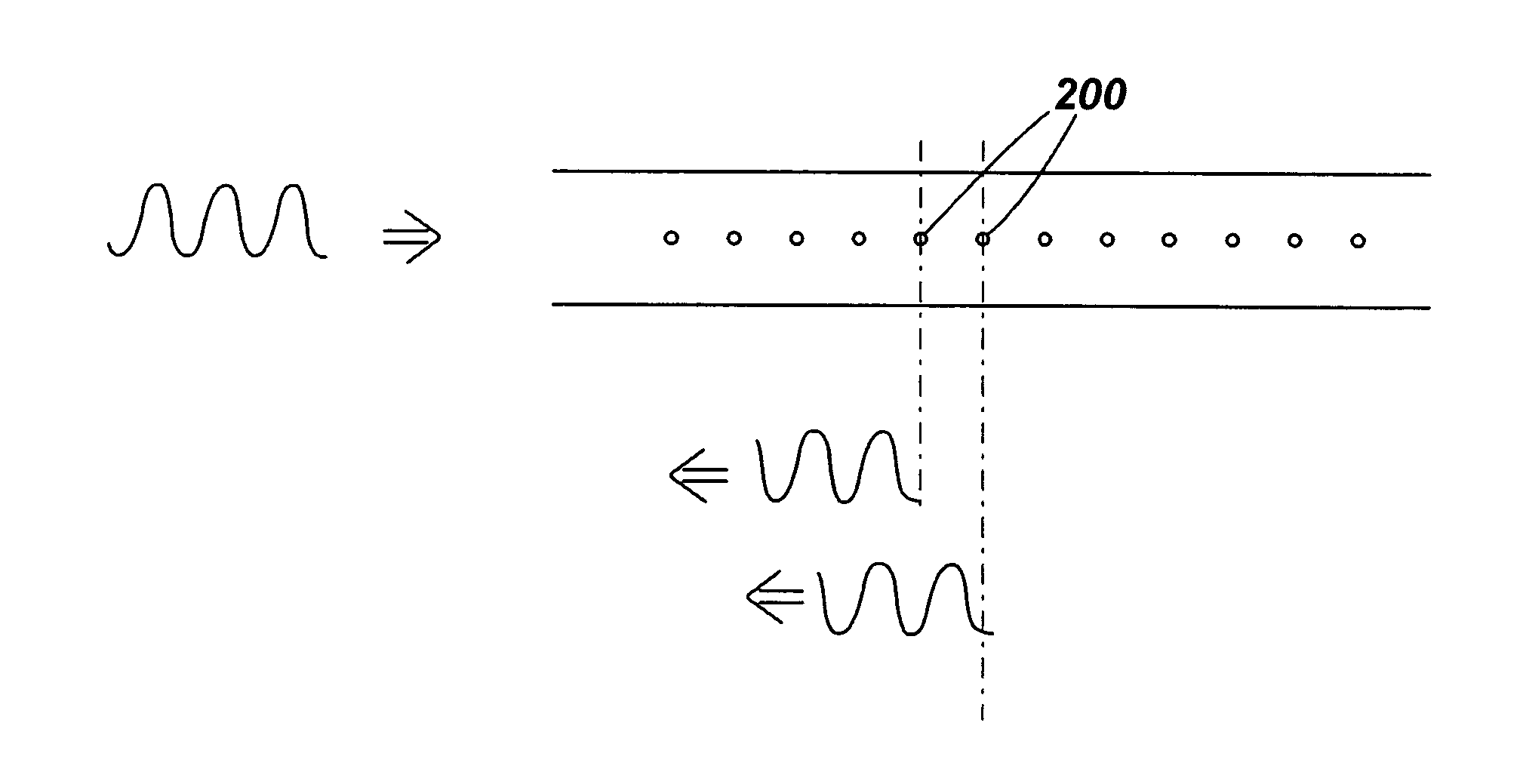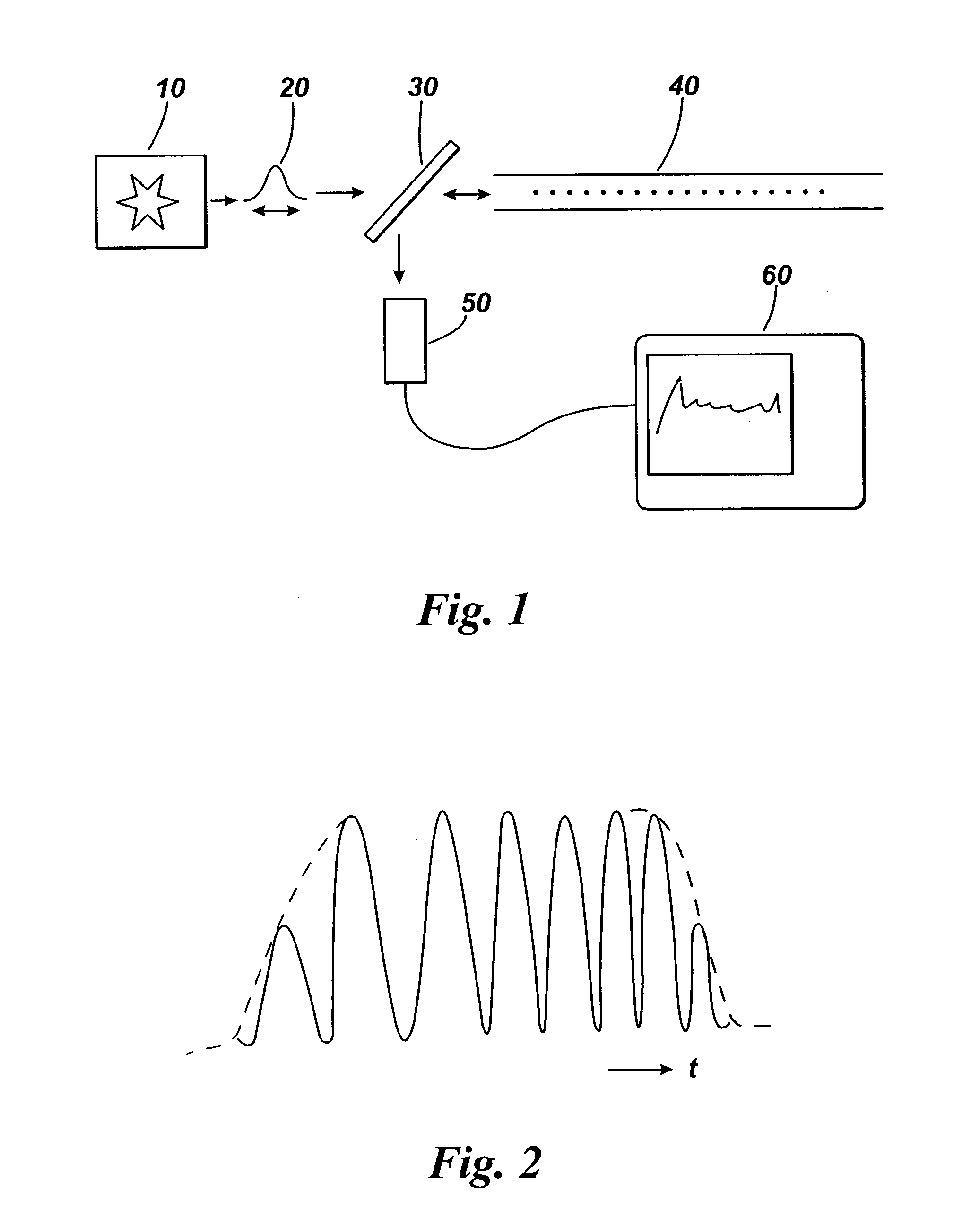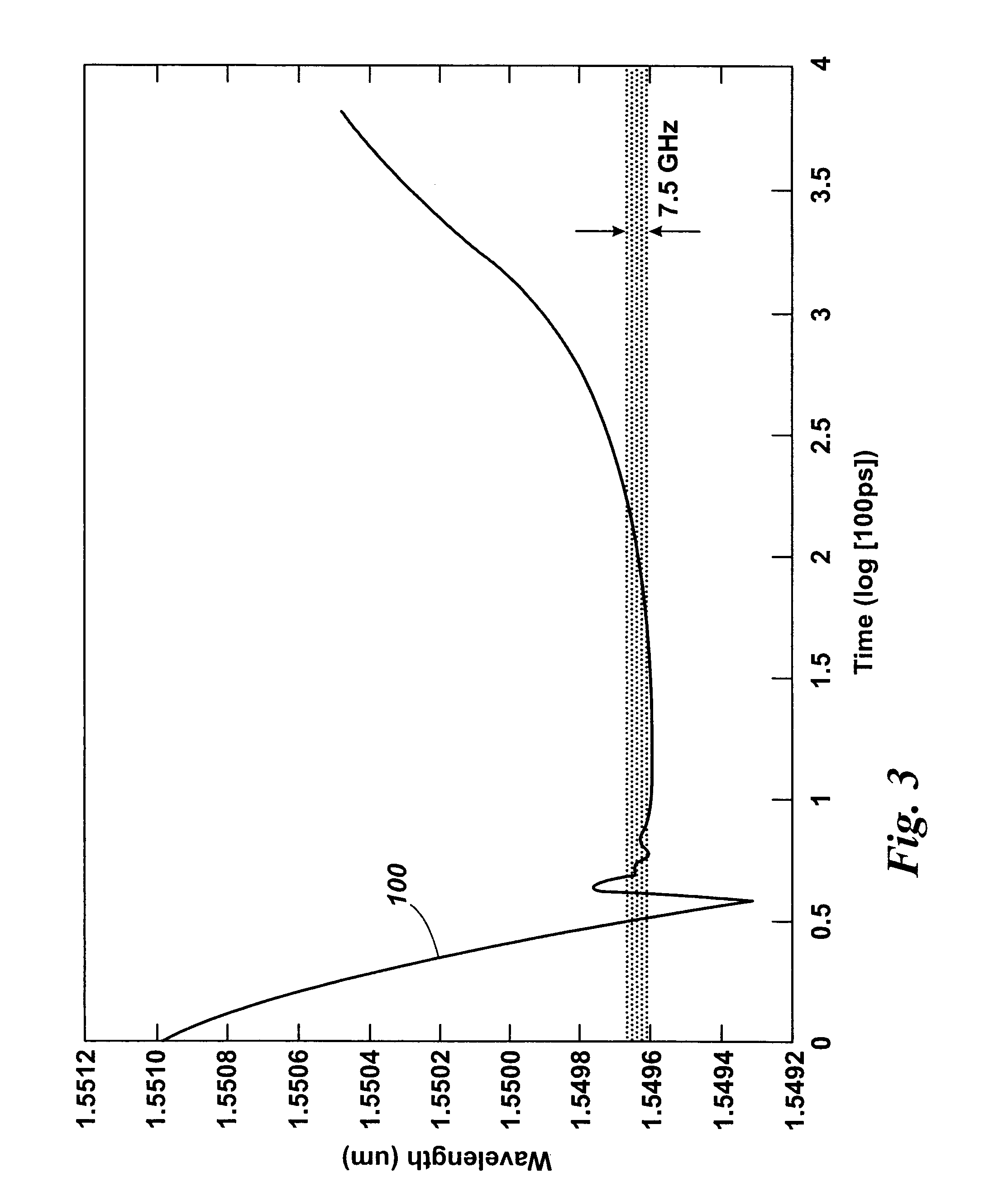Distributed Fibre Optic Sensing for Event Detection
a technology of event detection and distributed fibre optics, applied in the direction of testing fibre optic/optical waveguide devices, optical elements, instruments, etc., can solve problems such as full coherence, and achieve the effect of reducing coupling
- Summary
- Abstract
- Description
- Claims
- Application Information
AI Technical Summary
Benefits of technology
Problems solved by technology
Method used
Image
Examples
Embodiment Construction
[0058]FIG. 1 illustrates an arrangement for partially coherent reflectometry. The arrangement includes a laser 10 or other optical source arranged to emit coherent light. The laser 10 is arranged to generate optical pulses 20 which are launched into an optical fibre 40. Between the laser 10 and fibre 40 is a beamsplitter 30 or optical circulator. The beamsplitter or optical circulator allows light from the laser to pass into the fibre. If a beamplitter is used, a small amount of the input pulse can be tapped off for monitoring. The light is launched down the optical fibre 40 and some of the light is backscattered or reflected along the length of the fibre. Rayleigh backscattering occurs along the length of the fibre at scattering centres such as atoms, molecules, and other features of a size much smaller than the wavelength of the light. For example, the glass from which the core of the fibre is produced may be considered to be analogous to a fluid in which the atoms and molecules a...
PUM
 Login to View More
Login to View More Abstract
Description
Claims
Application Information
 Login to View More
Login to View More - R&D
- Intellectual Property
- Life Sciences
- Materials
- Tech Scout
- Unparalleled Data Quality
- Higher Quality Content
- 60% Fewer Hallucinations
Browse by: Latest US Patents, China's latest patents, Technical Efficacy Thesaurus, Application Domain, Technology Topic, Popular Technical Reports.
© 2025 PatSnap. All rights reserved.Legal|Privacy policy|Modern Slavery Act Transparency Statement|Sitemap|About US| Contact US: help@patsnap.com



